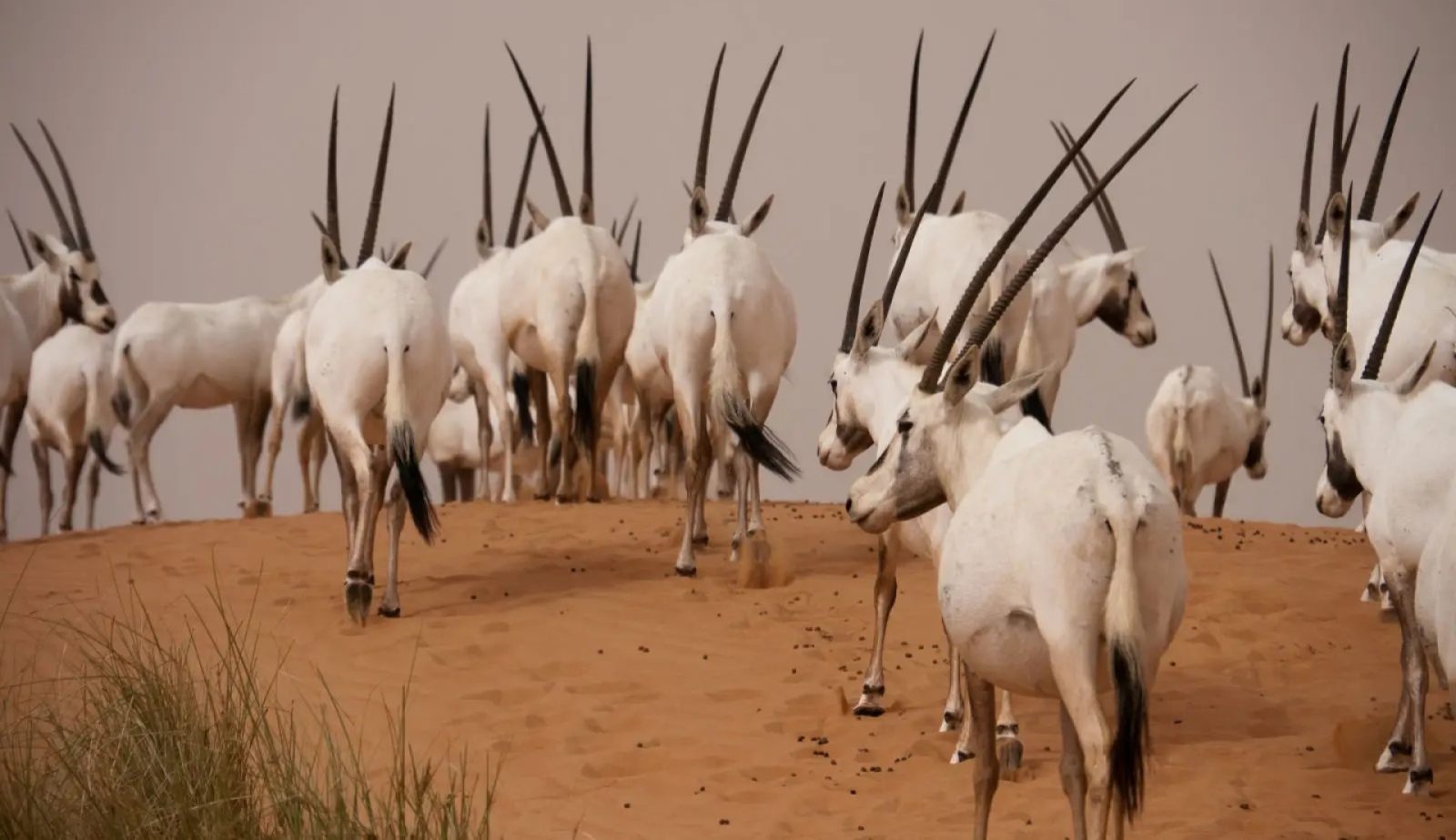
Saudi Arabia
Covering such a large part of the Arabian peninsular, the wildlife here is highly varied. Around 3500 plants are found across the country. Some of the larger mammals found here include the dromedary camel, the Arabian tahr, the Arabian wolf, the Arabian red fox and fennec, the caracal, the sand cat, the rock hyrax, the Cape hare, the striped hyena, the golden jackal and the honey badger. Unfortunately, due to incompatible human activity, the last 4 have suffered much local extinction – while they are not gone from the country, they are only found in certain areas.
The Arabian Oryx was extinct, but through a reintroduction program they are now back in the wild and doing well.
The sand cat is found in remote areas, and there is an estimated 2000-3000 wolves that live within the country.
A wide array of birds are native to Saudi Arabia, and include sandgrouse, quails, eagles, buzzards and larks and on the coast, seabirds include pelicans and gulls. The country is also visited by migratory birds including flamingoes, storks and swallows in spring and autumn. MacQueen’s bustard is a resident species that is dependent on good vegetation cover, often being found in areas with dense scrubby growth with shrubs such as Capparis spinosa. The cliff faces of the Asir Mountains provide housing for the griffon vulture, the Verreaux’s eagle and the small Barbary falcon, and the juniper woodlands are home to the Yemen linnet, the Yemen thrush, the Yemen warbler and the African paradise flycatcher. The hamerkop nests in the Wadi Turabah Nature Reserve, the only place on the Arabian Peninsula at which it is found (this bird is more common in Africa, and creates huge messy nests, which are usually easy to see).










